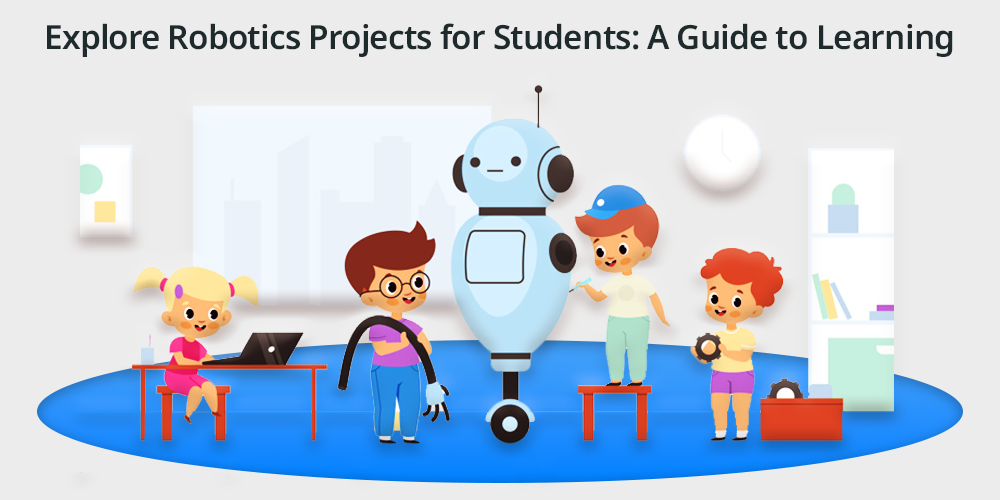
Robotics has been seen as one of the most transformative forces that has opened the ways for education in a very engaging way.
Robotics offers students the opportunity to learn science, technology, engineering and mathematics in a way that the concept doesn’t feel overwhelming to them and they interact well with real life challenges.
By participating in robotics projects students can get an insight of theoretical knowledge and will get the opportunity to develop hands-on skills that are very crucial to the technology driven world that we are looking forward to.
The hands-on projects provide students with a blend of creativity, problem solving and technical expertise in their learning journey which is the demand for the modern era challenges.
Table of Contents
Importance of Robotics in Education
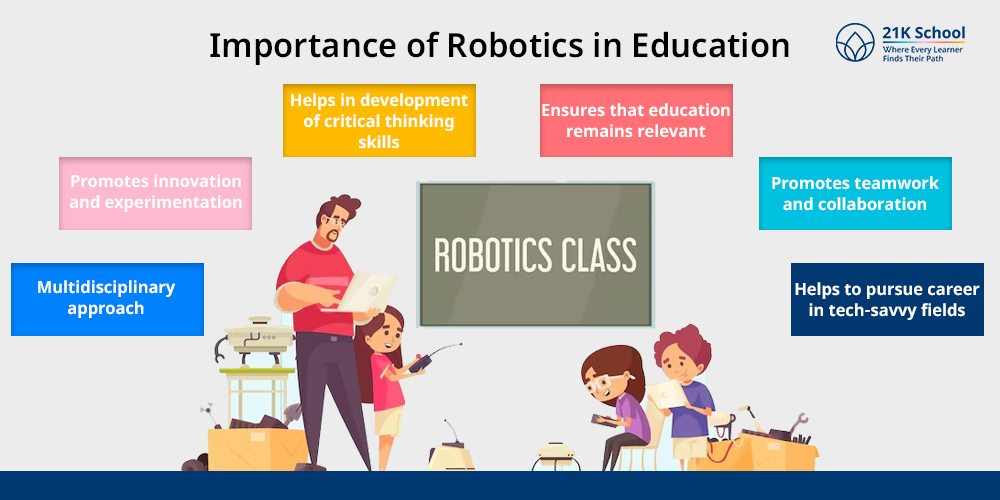
The key importance of robotics in education are:
1. Multidisciplinary approach
Robotics is an approach that provides students an opportunity to learn about various concepts and domains by integrating subjects like physics, mathematics and computer programming into learning.
2. Promotes innovation and experimentation
Robotics not only works well for the educational part to achieve academic milestones but it also allows students to create a platform for themselves where they can experiment and innovate creations.
3. Helps in development of critical thinking skills
Robotic helps students and develops all the necessary skills like critical thinking and innovation which allows them to bridge the gap between the theoretical learning and the real world application of the subjects.
4. Ensures that education remains relevant
Robotics also ensures that the education remains practical and relevant to the industry trends making sure that the students participate well for their future.
5. Promotes teamwork and collaboration
Robotics also promotes teamwork and collaboration, as many projects require students to work in groups. This collaborative environment helps students develop interpersonal skills, preparing them for professional teamwork scenarios.
6. Helps to pursue career in tech-savvy fields
Moreover, the exposure to cutting-edge technology motivates students to pursue careers in tech-savvy fields. These cover engineering, artificial intelligence, and robotics, aligning their education with future job market demands.
Skills Gained Through Robotics Projects
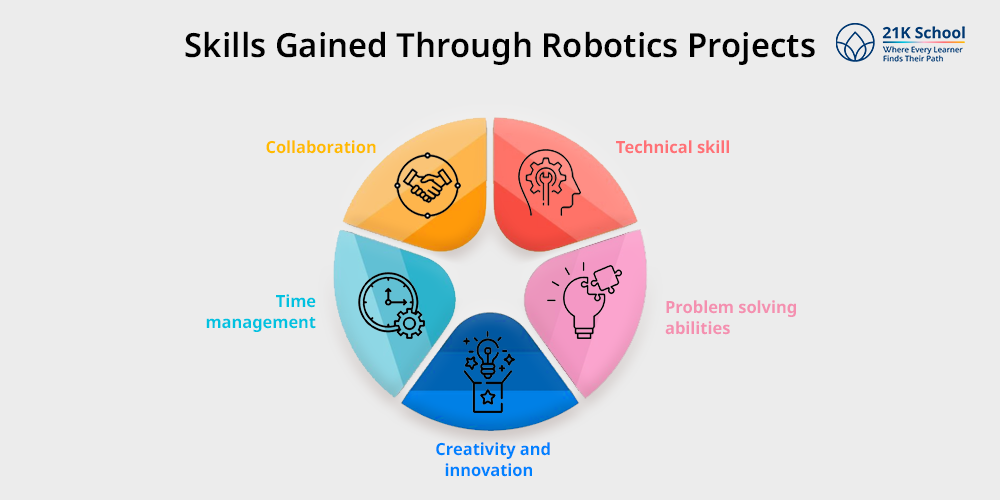
When a student participates in a robotic project it is a very wonderful opportunity for them to get hands on all the skills that are required for them to thrive in the professional environment.
Robotics exposes students to a wide range of skills that allows them to take account of their actions and understand how it contributes to their academic success while preparing them for the future.
Some of the basic skills that students can gain through robotics projects are :
- Technical skill
- Problem solving abilities
- Creativity and innovation
- Time management
- Collaboration
Beginner-Level Projects
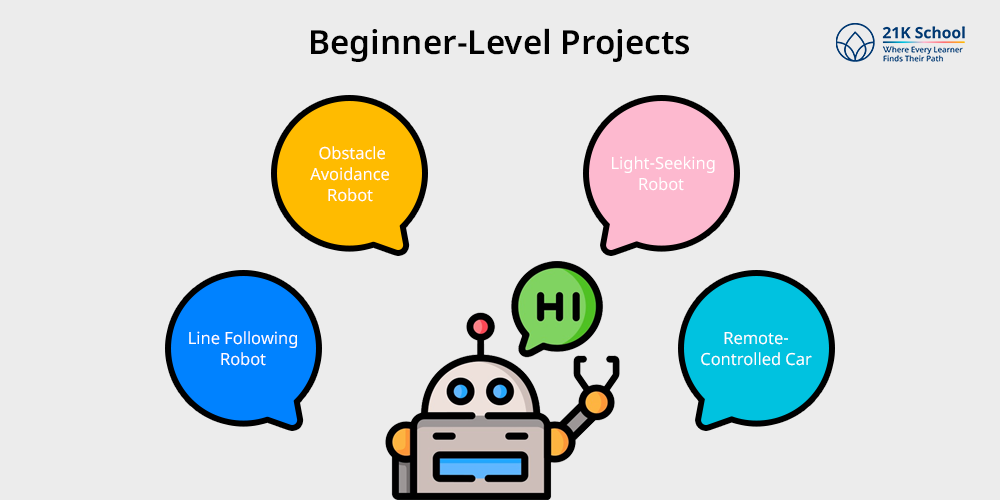
1. Line Following Robot
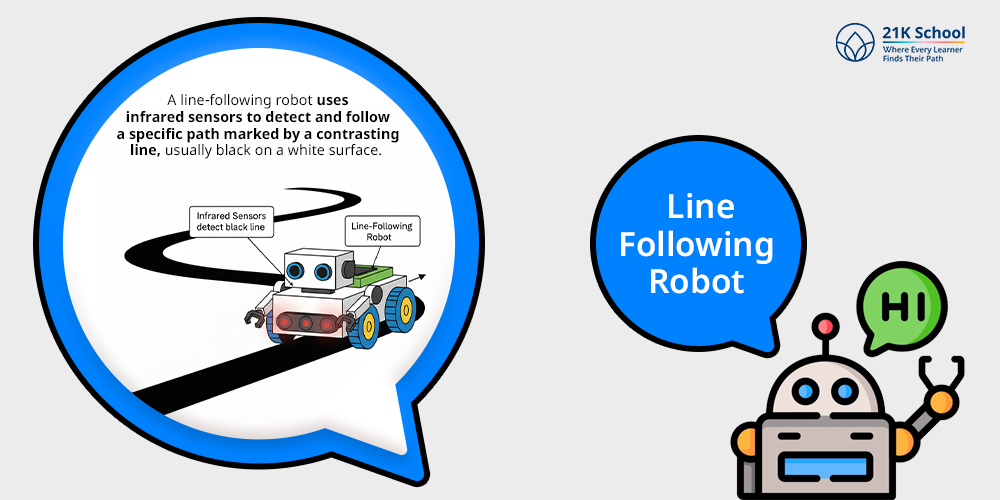
This classic beginner project introduces students to basic robotics principles such as sensor integration and motor control.
A line-following robot uses infrared sensors to detect and follow a specific path marked by a contrasting line, usually black on a white surface.
Students learn how to program microcontrollers to interpret sensor data and control motor movement, offering a solid foundation for more complex projects.
2. Obstacle Avoidance Robot
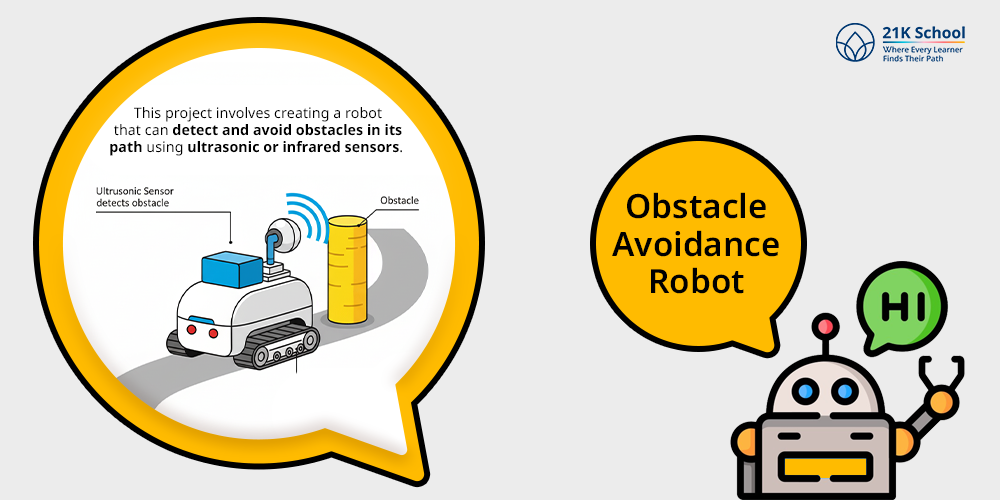
This project involves creating a robot that can detect and avoid obstacles in its path using ultrasonic or infrared sensors.
Students gain experience in sensor calibration and logic-based decision-making, as they program the robot to navigate around obstacles autonomously.
This project is ideal for understanding the interaction between hardware and software.
3. Light-Seeking Robot
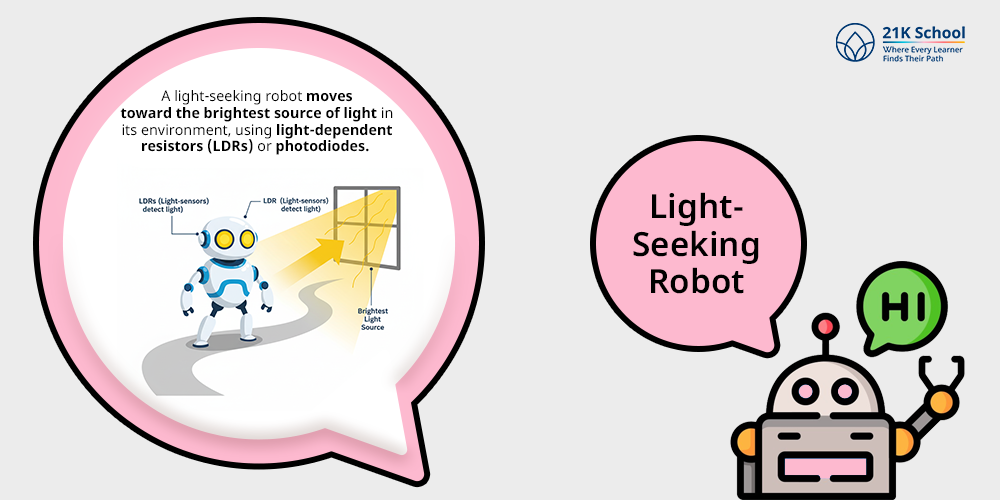
A light-seeking robot moves toward the brightest source of light in its environment, using light-dependent resistors (LDRs) or photodiodes.
This project introduces students to the concept of sensor input and its influence on robotic behavior.
It’s an engaging way to explore how robots can interact with their surroundings.
4. Remote-Controlled Car
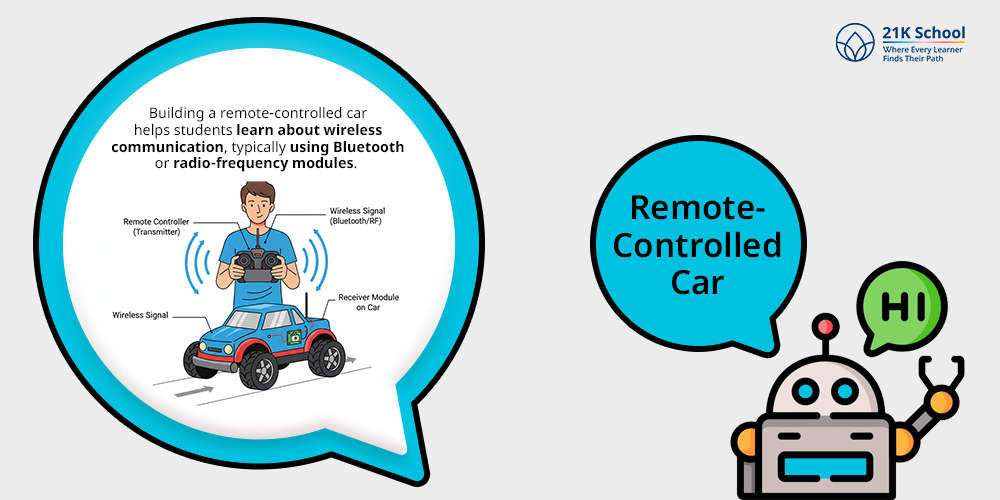
Building a remote-controlled car helps students learn about wireless communication, typically using Bluetooth or radio-frequency modules.
This project enhances understanding of motor control, wireless protocols, and user interface design, as students often create a mobile app or use a joystick to control the car.
Intermediate-Level Projects
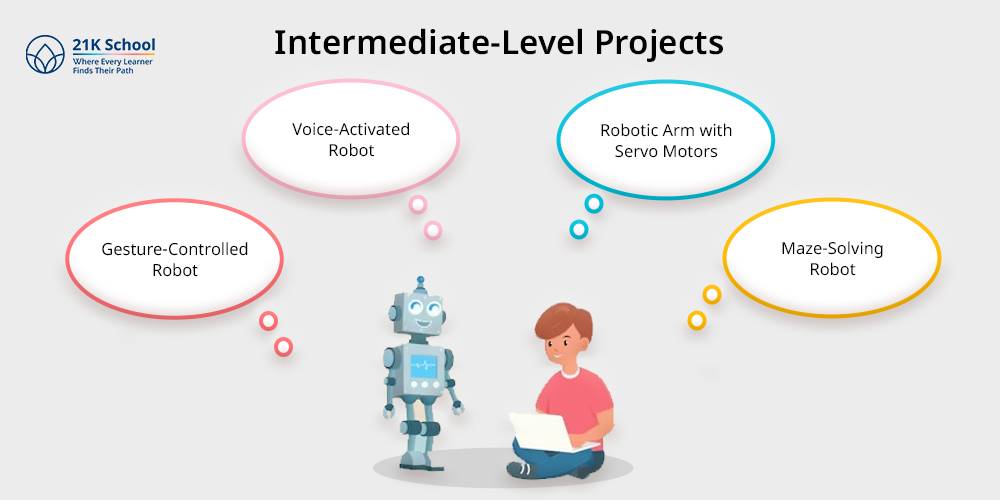
1. Gesture-Controlled Robot
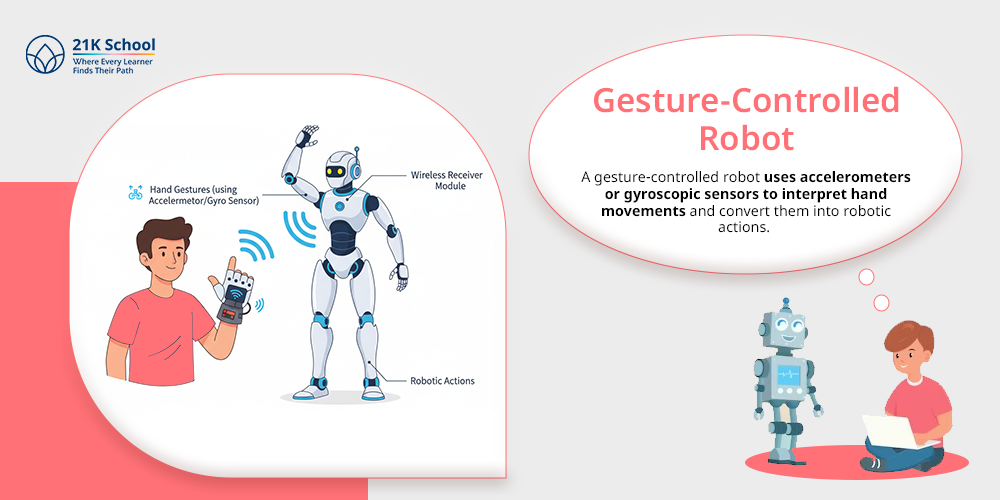
A gesture-controlled robot uses accelerometers or gyroscopic sensors to interpret hand movements and convert them into robotic actions.
This project is an exciting way for students to delve deeper into sensor technology and explore the concept of real-time data processing.
It also introduces the idea of human-machine interaction.
2. Voice-Activated Robot
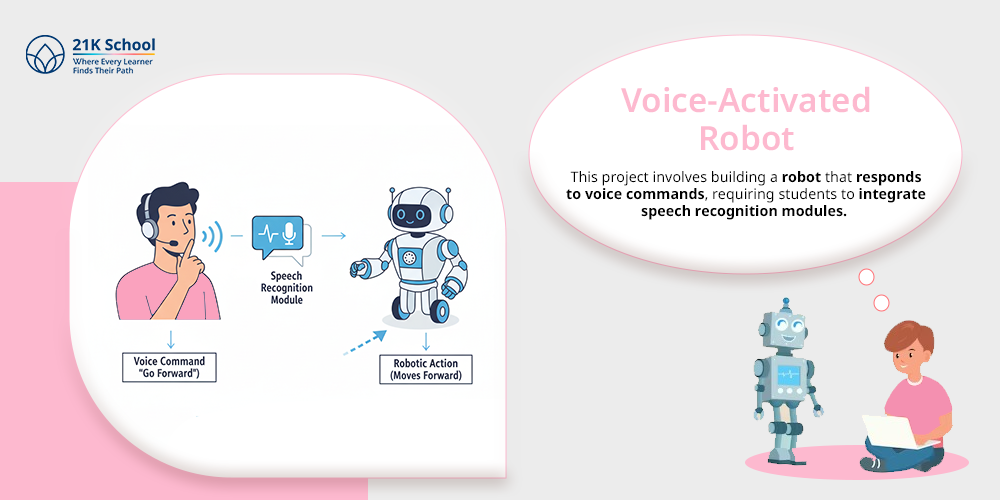
This project involves building a robot that responds to voice commands, requiring students to integrate speech recognition modules.
They learn about natural language processing and how to program robots to interpret and execute verbal instructions.
This project also demonstrates the potential of voice-controlled technology in various applications.
3. Robotic Arm with Servo Motors
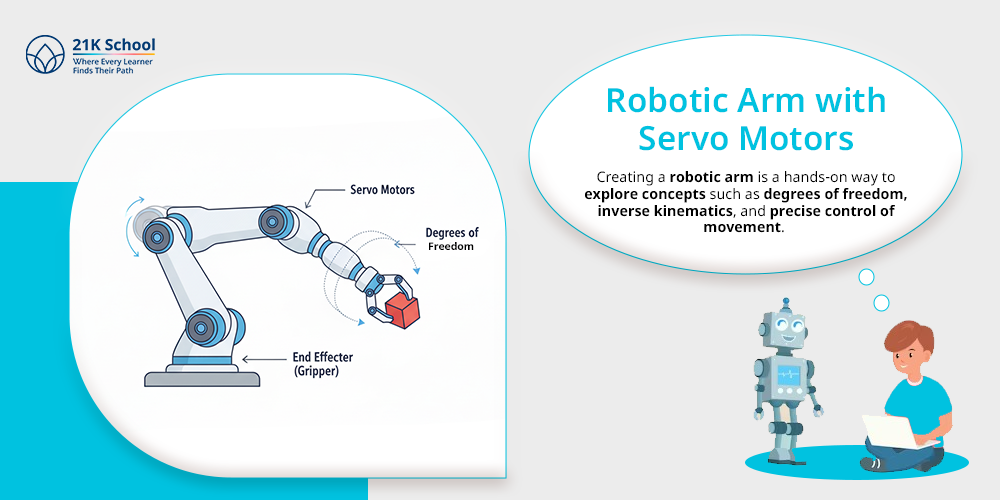
Creating a robotic arm is a hands-on way to explore concepts such as degrees of freedom, inverse kinematics, and precise control of movement.
Using servo motors and microcontrollers, students can design a robotic arm capable of tasks like picking and placing objects.
This project offers a deeper understanding of mechanical design and programming.
4. Maze-Solving Robot

Maze-solving robots use algorithms like Depth-First Search (DFS) or Breadth-First Search (BFS) to navigate through a maze.
Students program the robot to detect walls and make decisions based on the maze’s layout.
This project is an excellent introduction to algorithm design and autonomous navigation.
Advanced-Level Projects
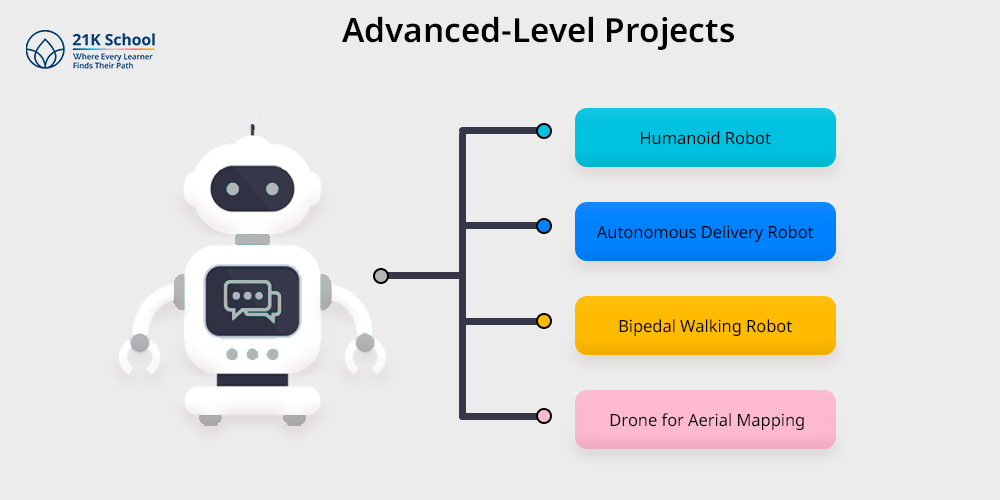
1. Humanoid Robot
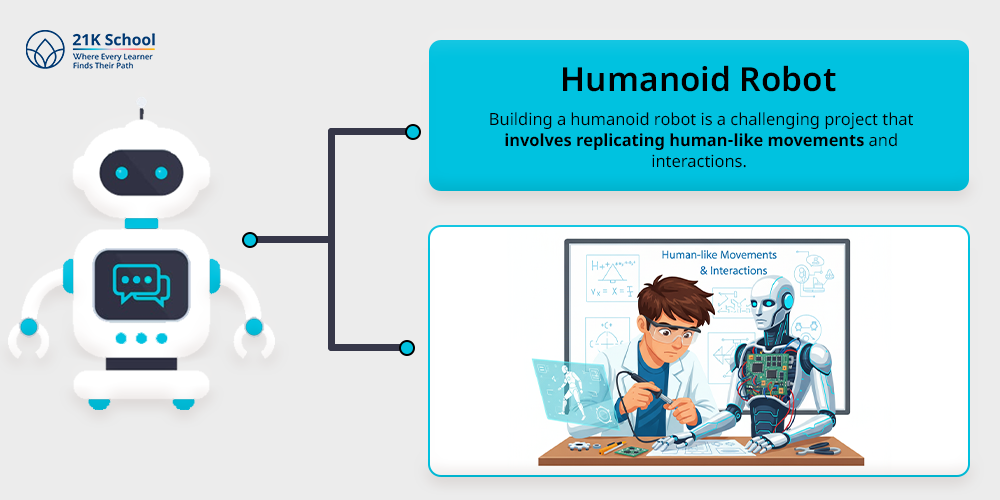
Building a humanoid robot is a challenging project that involves replicating human-like movements and interactions.
Students explore advanced concepts like balance control, speech synthesis, and facial recognition.
This project often requires expertise in both hardware and software, pushing students to their creative and technical limits.
2. Autonomous Delivery Robot
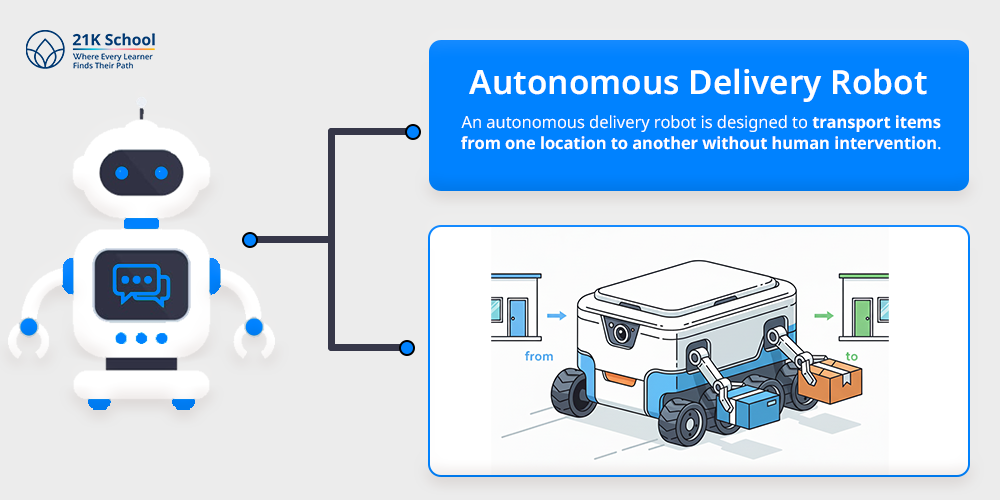
An autonomous delivery robot is designed to transport items from one location to another without human intervention.
Students work with GPS modules, path-planning algorithms, and object detection systems.
This project demonstrates the real-world applications of robotics in logistics and delivery services.
3. Bipedal Walking Robot
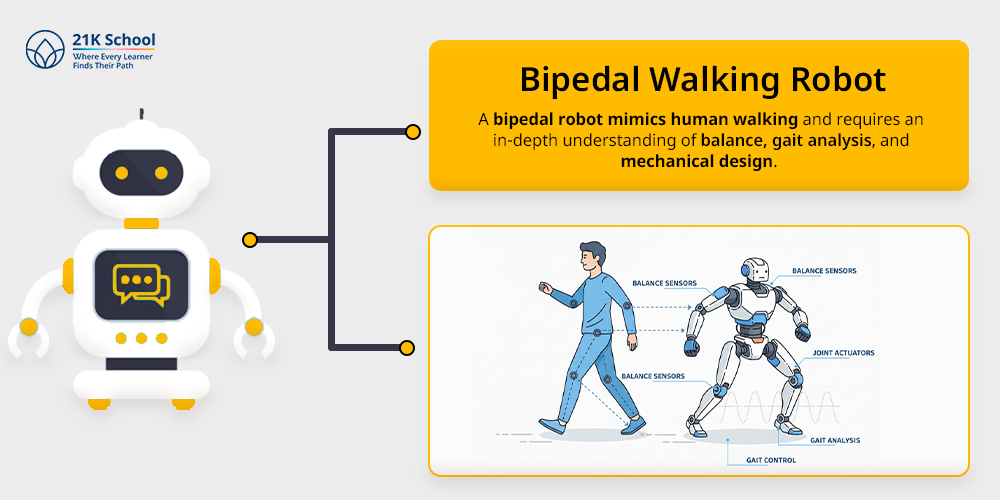
A bipedal robot mimics human walking and requires an in-depth understanding of balance, gait analysis, and mechanical design.
Students must program the robot to maintain stability while moving, a task that introduces them to advanced robotics principles.
4. Drone for Aerial Mapping
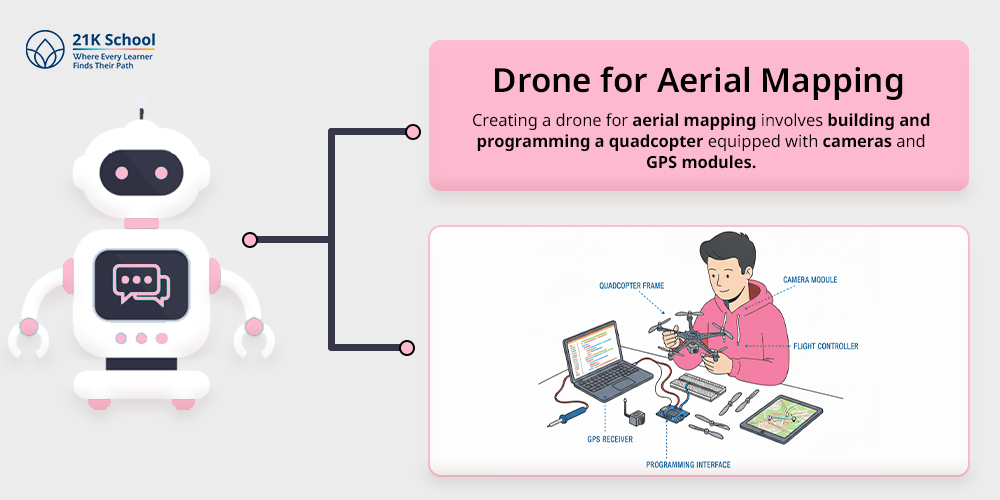
Creating a drone for aerial mapping involves building and programming a quadcopter equipped with cameras and GPS modules.
Students learn about aerodynamics, flight control systems, and image processing.
This project highlights the practical applications of robotics in fields like agriculture, surveillance, and environmental monitoring.
Thematic Projects
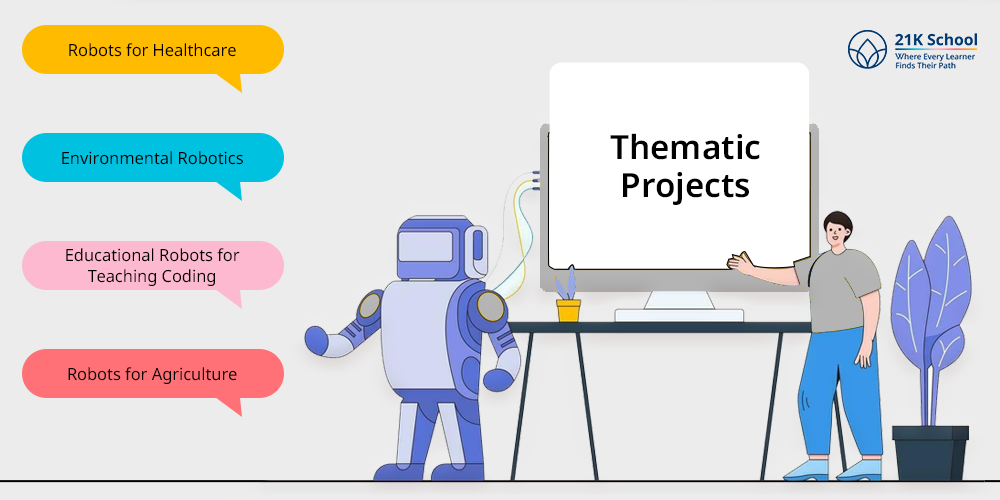
1. Robots for Healthcare
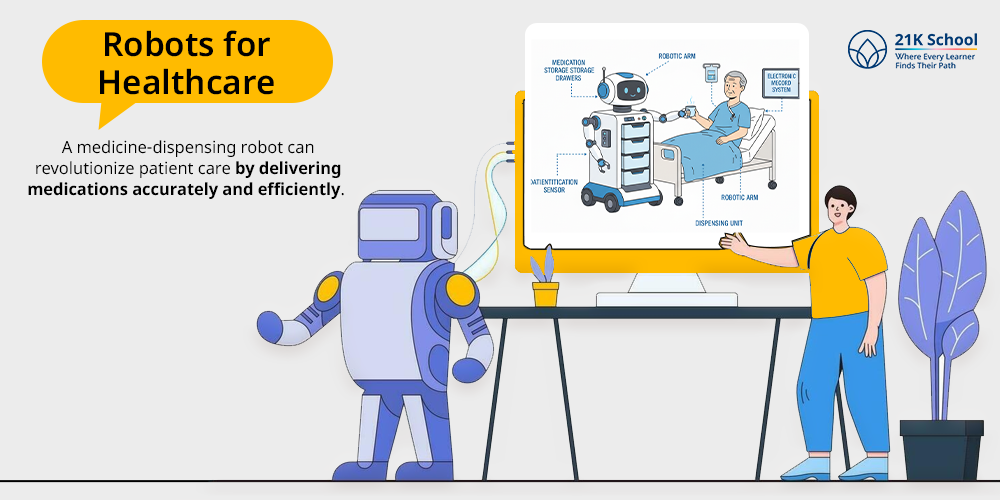
A medicine-dispensing robot can revolutionize patient care by delivering medications accurately and efficiently.
Students working on such a project learn about precision mechanics, patient safety, and medical applications of robotics.
2. Environmental Robotics
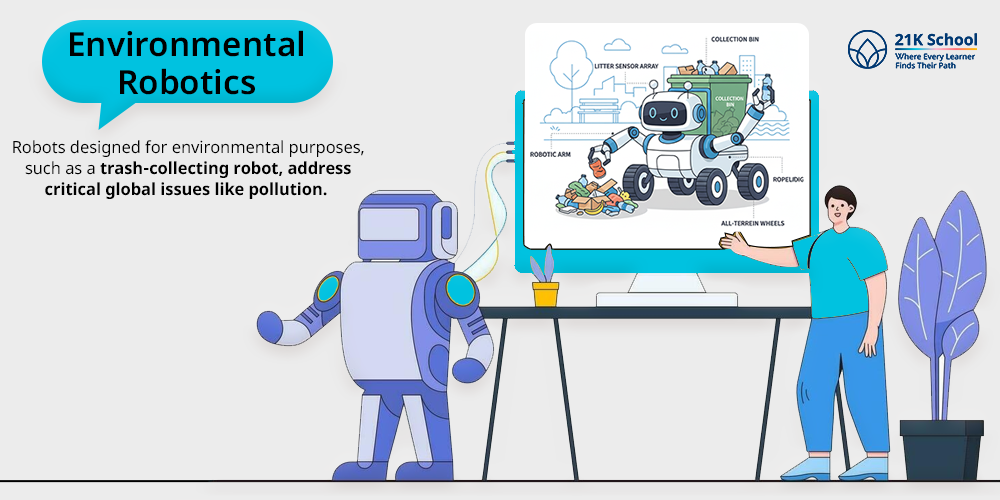
Robots designed for environmental purposes, such as a trash-collecting robot, address critical global issues like pollution.
Students gain insight into how robotics can contribute to sustainability and environmental preservation.
3. Educational Robots for Teaching Coding
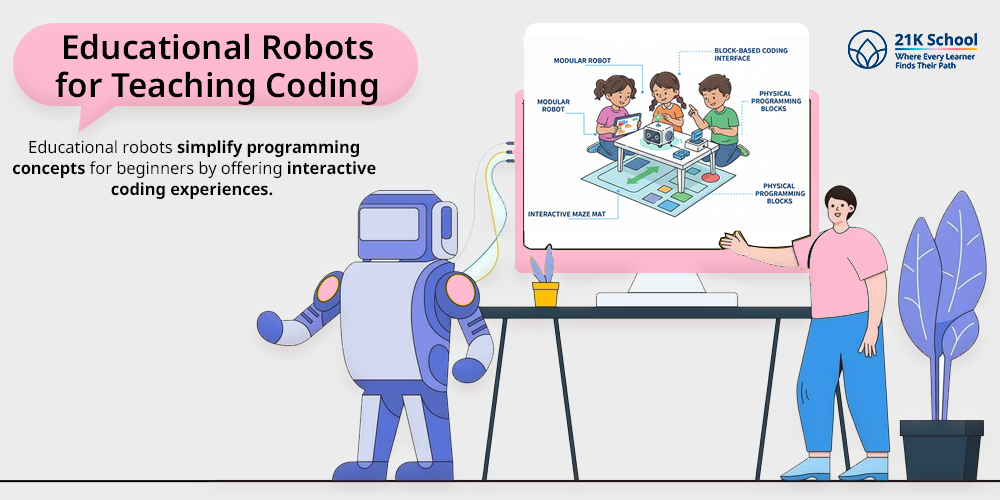
Educational robots simplify programming concepts for beginners by offering interactive coding experiences.
Students designing such robots focus on user-friendly interfaces and innovative teaching methods.
4. Robots for Agriculture
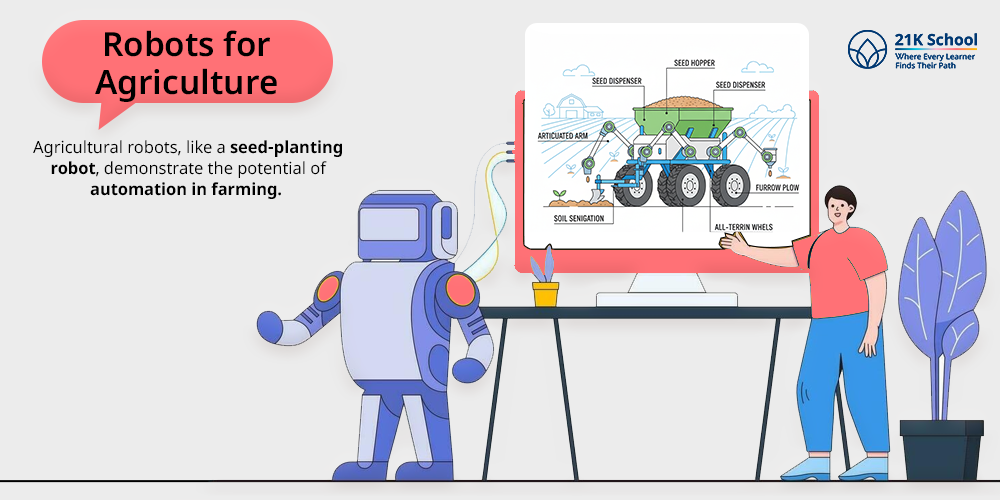
Agricultural robots, like a seed-planting robot, demonstrate the potential of automation in farming.
These projects involve integrating sensors for soil analysis and designing mechanisms for precise planting, offering students a glimpse into the future of smart farming.
Conclusion
Robotics is an integral part of the innovation that we see in the education industry.
These projects offer students a unique opportunity to explore their intersection of technology and creativity which helps them in developing all the important and necessary skills which contribute to making them into a well rounded individual.
From beginners to advanced levels these projects provide students with hands-on experience about their learning which will prepare them for their future career endeavours.
These projects integrate a conceptual understanding of STEM subjects.
Robotics is not just about building mechanisms and developing machines, it is more to do with students’ problem solving skills which motivate them to be responsible innovators of tomorrow.


